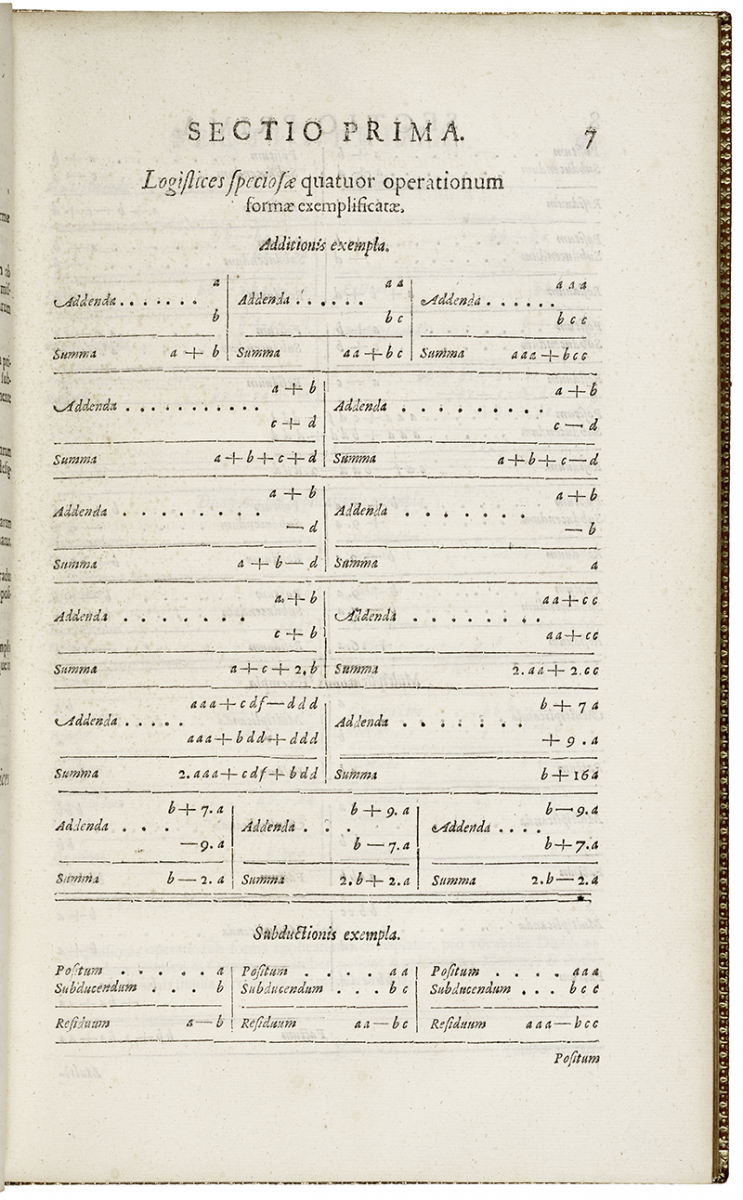- About MAA
- Membership
- MAA Publications
- Periodicals
- Blogs
- MAA Book Series
- MAA Press (an imprint of the AMS)
- MAA Notes
- MAA Reviews
- Mathematical Communication
- Information for Libraries
- Author Resources
- Advertise with MAA
- Meetings
- Competitions
- Programs
- Communities
- MAA Sections
- SIGMAA
- MAA Connect
- Students
- MAA Awards
- Awards Booklets
- Writing Awards
- Teaching Awards
- Service Awards
- Research Awards
- Lecture Awards
- Putnam Competition Individual and Team Winners
- D. E. Shaw Group AMC 8 Awards & Certificates
- Maryam Mirzakhani AMC 10 A Awards & Certificates
- Two Sigma AMC 10 B Awards & Certificates
- Jane Street AMC 12 A Awards & Certificates
- Akamai AMC 12 B Awards & Certificates
- High School Teachers
- News
You are here
Mathematical Treasure: Thomas Harriot's Algebra

Thomas Harriot (ca. 1560-1621) was a British mathematician who possesses the distinction of being the first known mathematician to have worked, albeit as a surveyor, in the newly discovered territories of America. In his Artis analyticae praxis [Practice of the Art of Analysis], published posthumously in 1631, he attempted to establish a standardized system of algebraic notation. On page 7, Harriot demonstrated the addition of two binominals in pairs.

Here on page 22 of the Praxis, Harriot considered a fourth degree equation and showed its construction through multiplication of four binomial factors. As an exercise, a reader may wish to perform the expansion and check the author’s calculations.
Used by the permission of the Folger Shakespeare Library, Washington, D.C.
Frank J. Swetz (The Pennsylvania State University), "Mathematical Treasure: Thomas Harriot's Algebra," Convergence (March 2014)




